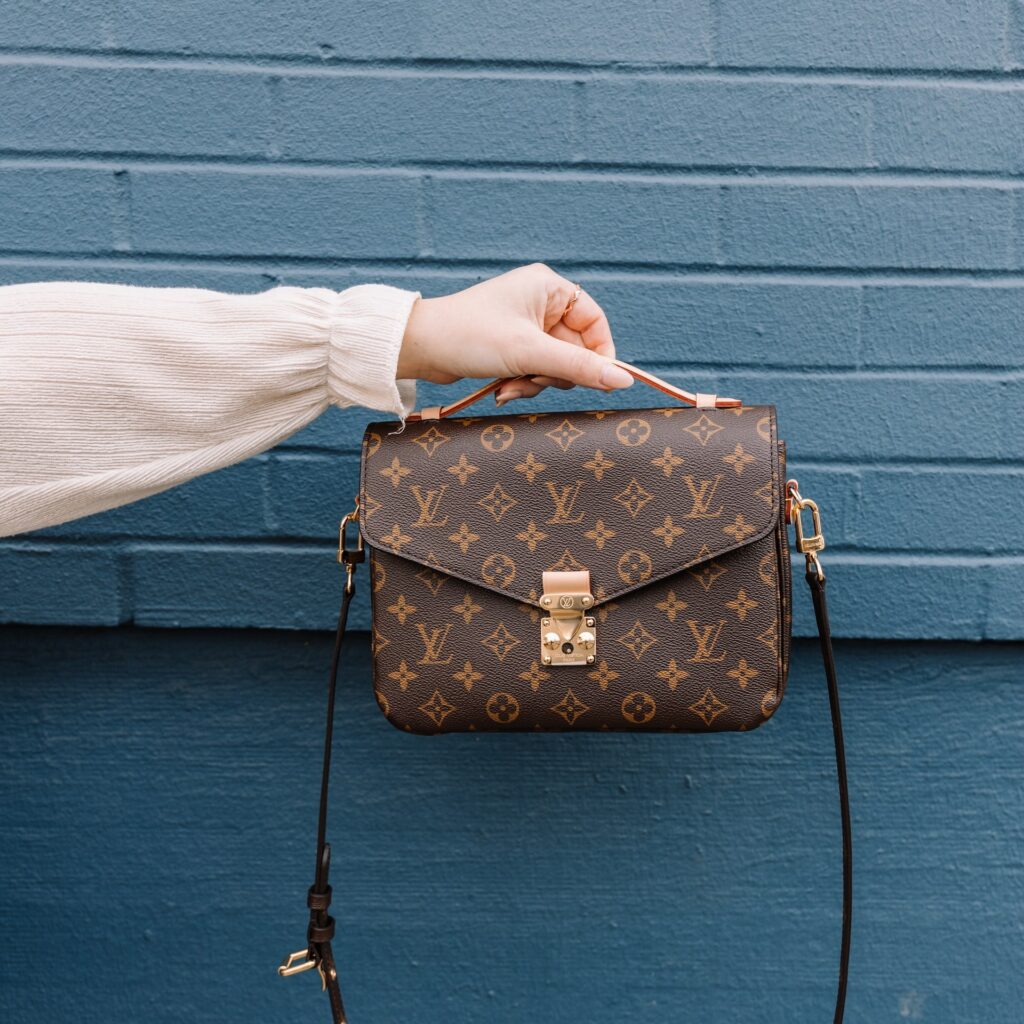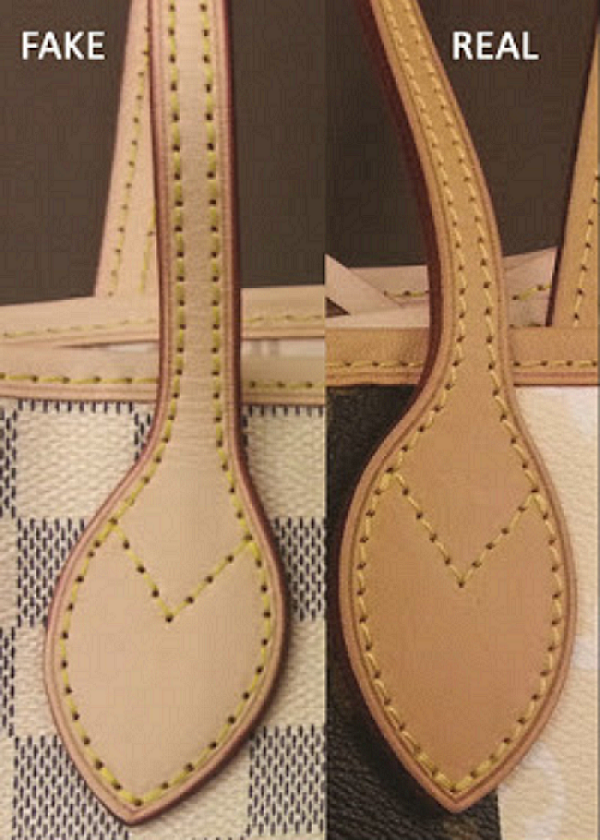Alice Thandiwe worked for five years at the Louis Vuitton store in Westfield Mall, Cape Town.
All employees were trained to spot signs that a Louis Vuitton bag was fake.
Customers came from all walks of life, and friends had mixed reactions about where she worked.

This as-told-to essay is based on a conversation with Alice Thandiwe, a senior account executive and former Louis Vuitton employee from Cape Town. It’s been edited for length and clarity.
I had always dreamed of a career in fashion, and working in luxury retail seemed like an ideal stepping stone.
During college, I worked at two well-known luxury retail stores.
One day, while shopping with a friend at the Westfield Mall in Cape Town, I noticed a Louis Vuitton store was set to open in the spring.
A connection helped me secure an interview, and I landed the job, working there from 2010 to 2015.
I felt passionate about the brand and went on to own several LV products myself, from handbags to shorts and a swimsuit.
Starting at Louis Vuitton

When I was hired, I attended a weeklong training program where I learned about the history of the company, the current product line, and the process of creating the products.
I started as a part-time sales associate and worked my way up to key-holder manager.
My responsibilities included opening and closing the store, checking sales reports, setting daily sales goals, and attending to any customer needs if a manager was requested.
I challenged myself to learn everything I could about the product, operations, and after-sales service, or repairs.
I even learned how to hot stamp small leather goods and make minor repairs in-store.
One year, for high sales performance, I was invited to a rooftop event at the flagship store followed by dinner at an upscale restaurant.
I was also given a special gift — a passport holder with my initials hot-stamped inside it.
Interacting with Diverse Customers
I worked with people from all walks of life, so there’s no single way to describe them all.
People buy luxury goods for various reasons.
Some truly appreciate products that last a lifetime, others enjoy the exclusivity, and some like investing in luxury items with the income they’ve worked hard for.
When I worked there, you could buy a bag for as low as $600 (a Speedy) and as high as $24,000 (the more exotic bags made of crocodile or ostrich).

By the time I left, prices had risen, and the most inexpensive bags cost about $1,200.
Once, a DJ came in looking for luggage and bought a few Pégase bags, which cost over $3,000 each.
He mentioned that he had been homeless before his career took off and never dreamed of purchasing such extravagant items.
A manager at the flagship store shared another story with me.
One evening, as the store was about to close, they received a call with a special request: a princess would be stopping by.
Staff set up tables with food and beverages, and the princess shopped until past midnight, selecting products worth millions.
Dealing with Fake Items
The company focused on training employees to understand the quality and craftsmanship of LV products, so we could differentiate between real and fake merchandise.
Each genuine Louis Vuitton piece has its unique attributes.
We studied everything from the unique quality of the canvas and the precise alignment of the print to the unmistakable feel of the leather and the specific shade of the stitching.
The weight of the hardware, the smell of real leather, even the sound of the zipper—these are all clues that tell us whether we’re handling a real Louis product.
If someone asked us to authenticate a product, we were trained to tell them it was either a “Louis Vuitton product” or “not Louis Vuitton product” to avoid conflicts if a customer became irate.
If a sales associate was unsure, they would ask a manager.

However, I always knew because I took the time to familiarize myself with the products and materials.
At Louis Vuitton, the battle against counterfeit goods was not just about protecting the brand; it was about preserving the trust and satisfaction of every customer who walked into the store.
One time, a well-dressed woman came in asking for a return.

She pulled out two bags, and I immediately noticed one was of terrible quality.
Something about the zipper just didn’t feel right. It was too stiff and sounded harsh when pulled.
A closer inspection revealed inconsistencies with the heat stamps and the quality of the canvas—clear indicators of a fake.
After examining the bags, I had to break the bad news to her. She took them and left without further argument.

Another time, a young girl came in with a friend to return or exchange a bag, and it was definitely not an LV product.
My manager spotted it from across the room and shook her head.
I had to politely inform the young girl that it wasn’t a Louis Vuitton product.
She called her father on the phone to tell him, and then she and her friend walked out.
Confronting customers about counterfeit items was delicate.
We never used the word ‘fake.’ Instead, we would say it’s not a product that can be serviced by us because it does not meet our authenticity standards.
This approach helped avoid direct accusations, which could escalate into confrontations.
Most customers were genuinely surprised, having often purchased the item from third parties believing it was authentic.
It was a sensitive situation, needing careful handling.
So, here’s our step by step process of handling counterfeit returns at Louis Vuitton:
1. Identifying the Counterfeit
The first step in handling a return was verifying the bag’s authenticity by carefully examining its materials, stitching, hardware, and logo consistency.
Any signs of discrepancy would alert me to a potential counterfeit.
2. Communicating with the Customer
If I determined the item was counterfeit, I communicated this delicately, avoiding the term “fake.”
Instead, I would explain, “We cannot accept this item for return as it does not meet our Louis Vuitton manufacturing specifications.”
This careful phrasing helped prevent confrontations and respected the customer’s dignity.
3. Educating the Customer
After addressing the authenticity issue, I would guide the customer on how to identify genuine products and suggest purchasing from official sources.
This not only built trust but also empowered them with knowledge for future purchases.
4. Documenting the Incident
Every counterfeit return was documented in detail.
These records were essential for our management to monitor trends and refine our anti-counterfeiting strategies.
5. Supporting Customer Relationships
To maintain a positive relationship, we sometimes offered discounts on genuine items for those inadvertently duped by third parties.
This gesture helped reinforce their loyalty to our brand.
Becoming an Expert in Spotting Fakes
During my tenure at Louis Vuitton, I became adept at distinguishing real Louis Vuitton items from fakes.
I could spot fake products everywhere — at dinner, on vacation, on social media, and even in movies and reality shows.
One detail that gives it away immediately is the color.

There’s a richness in the real LV product’s color that isn’t obvious at first glance, but once you compare materials, you can tell the difference.
When you handle the LV product daily, you can spot certain details.
Feeling the materials helps you recognize what feels luxurious and what feels cheap.
Here’s a closer look at the techniques and tips we used to spot counterfeit Louis Vuitton bags, which can serve as a guide for anyone looking to ensure the authenticity of their luxury items.
1. Materials Quality

Louis Vuitton bags are known for their high-quality materials.
Genuine Louis Vuitton leather, for example, will patina over time, turning a rich honey color as it ages.
Counterfeits often use inferior leather that does not change color or feels plastic-like.
The canvas used in LV bags is also distinctive; it is durable and does not peel or fade over time as many fakes do.
Also, genuine LV leather panels do not have seams on the base, maintaining a continuous look, unlike many counterfeits which exhibit seams due to material constraints.
2. Stitching Perfection
Authentic LV bags feature yellow-mustard colored stitching, contrasting with the bright yellow often found on replicas.
The threads are made from linen, dyed yellow, and reinforced with beeswax, ensuring durability and no loose ends.
The stitching on genuine LV bags is impeccable, with no signs of fraying or loose threads.
3. Hardware Detail
The hardware on an authentic Louis Vuitton bag, such as zippers, clasps, and buckles, should be of excellent quality.
Authentic bags feature precise engravings on all hardware. Counterfeits often have blurry or misspelled engravings.
Genuine hardware is typically made from brass or gold metal and feels heavy.
Fake hardware feels light, hollow, and often overly shiny.
4. Handles
Authentic LV bags use natural-toned cowhide leather for the handles, starting as a pale, beige color that deepens to a rich honey hue as it ages.
The handles are soft to the touch, a direct result of the high-quality leather used.
5. Logo

The Louis Vuitton logo is iconic and is a common target for counterfeiters.
My training included identifying correct logo placement and appearance.
The LV monogram should be symmetrical from side to side and is never cut off or covered by seams or stitching.
Authentic LV items display a very specific font and spacing.
Any deviation from this might indicate a fake.
6. Interior Labeling
![How To Spot Real Vs Fake Louis Vuitton Bag [2024 Update] – LegitGrails](https://cdn.shopify.com/s/files/1/0094/6307/0798/files/The_Inner_Logo_Label_1_358db576-e781-4705-8f7e-42e8db28ddf4_1024x1024.png?v=1709736593)
Louis Vuitton uses specific types of labels inside their bags, with precise font and layout:
All authentic LV bags feature the inscription ‘Louis Vuitton Paris’ accompanied by the circled R trademark logo.
It’s crucial to check the spelling of ‘Louis Vuitton’ and ensure the roundness of the ‘O’, as counterfeits often mistakenly use an oval ‘O’.
Heat stamps should be clear and well-defined.
While serial numbers alone aren’t definitive proof of authenticity, they should follow the format used by Louis Vuitton.
7. Smell Test
Authentic Louis Vuitton items will not have a chemical or plastic smell.
Many fakes are made with materials that emit a strong synthetic odor due to the cheap chemicals used in production.
The issue of counterfeits affects more than just the brand’s image; it impacts the customers’ perception of luxury.
Reactions to My Job
When I told friends and family I worked at LV, some would jokingly ask me to share my discount, but that would never happen.
Some were confused and ignorantly asked why I wasn’t using my degree.
Others thought it seemed like a glamorous place to work.

Transitioning to a New Career
After five enriching years at Louis Vuitton, where the nuances of luxury retail were as much a part of my daily routine as my morning coffee, I felt a stirring for change.
The skills and experiences I had gathered were invaluable, yet I yearned to explore new horizons beyond the retail floor.
My decision to leave was not made lightly; it was the culmination of a growing desire to apply my knowledge and skills in a broader context.
I transitioned into public relations, specifically within the technology sector, an industry as dynamic and fast-paced as fashion but with its own set of challenges and innovations.
This move was driven by my fascination with tech and its impact on our daily lives, and a desire to be part of a sector that was reshaping the world.
The transition was both exhilarating and daunting.
The principles of customer service, attention to detail, and brand integrity I learned at Louis Vuitton proved to be universally applicable and invaluable.
These skills helped me quickly adapt to the PR world, where managing perceptions and maintaining client relations are paramount.
Moreover, my background in handling luxury products gave me a unique perspective on brand management and marketing strategies in the tech industry.
Conclusion
My time at Louis Vuitton was a transformative experience.
It taught me about the intricacies of luxury retail, the importance of quality and craftsmanship, and how to handle customers from all walks of life.
Spotting fakes became second nature, and I developed a keen eye for detail.
While my career has moved on, the lessons I learned at LV continue to influence my professional life.
The experiences, both positive and challenging, shaped my understanding of the luxury market and the high standards it upholds.
The world of luxury retail is fascinating and complex, and working at Louis Vuitton gave me a unique insight into an industry that blends art, fashion, and business.
Whether dealing with genuine products or identifying counterfeits, the journey was always about maintaining the integrity and excellence that the brand represents.



